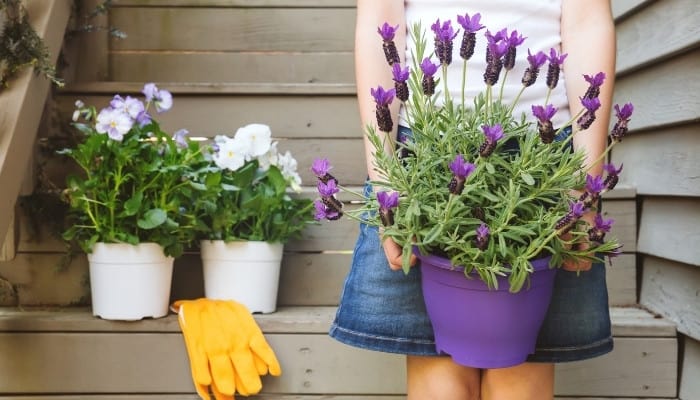If you encounter any difficulties while attempting to rewrite the following text, please respond with the error message: Unable to process the request due to encountered difficulties. Lavender is a popular herb known for its usage in essential oils, aromatherapy, and cooking. Once dried, the delicate purple flowers can be incorporated into potpourri or smudge ceremonies.
Lavender is native to the Mediterranean region and grows well in many outdoor climates. However, it can successfully be grown indoors when the ideal variety is chosen.
Which lavender is best for indoors? The best varieties of lavender to grow indoors are French lavender, Canary Island lavender, and fern leaf lavender. These varieties are more tolerant of indoor conditions than other varieties, like the popular English lavender, and they tend not to grow too big, so maintaining them is easy.
Even if you choose a great indoor lavender variety, they are always better suited for outdoor growth. Lavender needs full sun, which can be hard to recreate indoors.
There are a few things you can do to optimize your indoor environment to grow the healthiest and most beautiful lavender possible.
Best Lavender Varieties To Grow Indoors
French Lavender
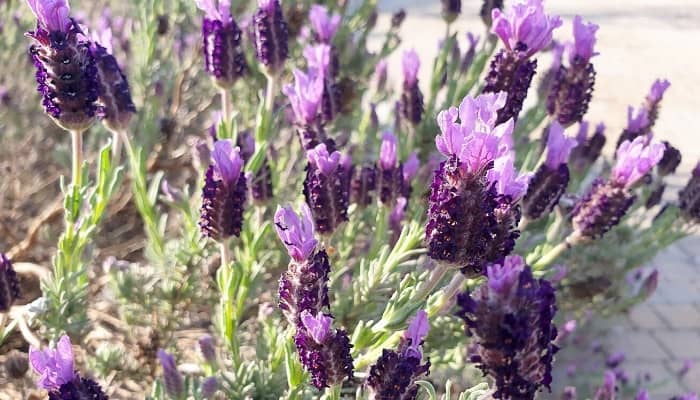
French lavender often gets confused with Spanish lavender because both species are native to Spain.
This species is more drought and heat-tolerant than hybrid or English varieties, making it better suited for consistent indoor temperatures.
In addition, French lavender does not need a winter dormancy period (like English lavender does), so it will produce more and better blooms come springtime.
Flowers can last from spring to fall in optimal conditions, but the fragrance is mild compared to other species.
- Botanical Name: Lavandula dentata
- Average Size: Up to 2-3 feet
- Flowers Readily: Yes
- Fragrance: Mild
- Lifespan: 15 years
Canary Island Lavender
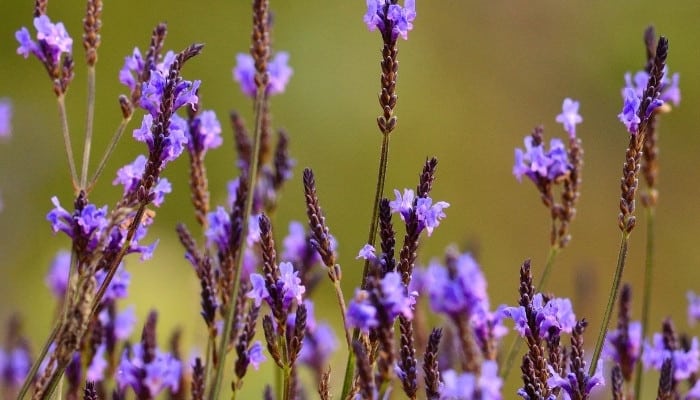
Canary Island lavender has deep blue-purple flowers that bloom continuously in the right climate. This plant grows in rocky terrain on the Canary Islands.
It can survive well in a pot, but it does best with a chunky, aerated potting mix.
- Botanical Name: Lavandula canariensis
- Average Size: Up to 4 feet
- Flowers Readily: Yes
- Fragrance: Very mild or none
- Lifespan: 12 years
Fernleaf Lavender
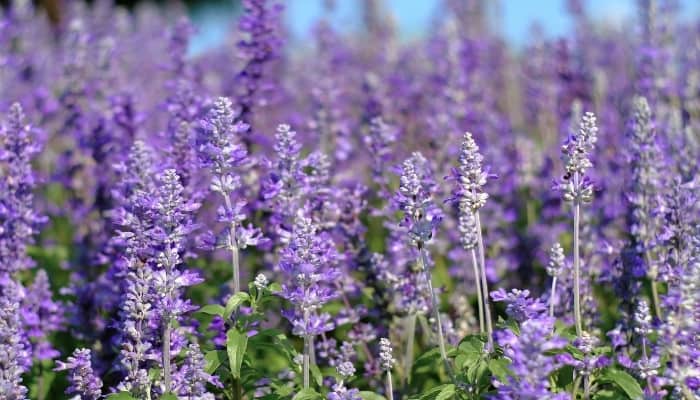
Fernleaf lavender is also known as Egyptian lavender or French lace lavender. Like other lavender varieties, it does best in a warm environment with drier conditions.
This is a naturally smaller species of lavender, so it will require less pruning to maintain a manageable indoor size.
- Botanical Name: Lavandula multifida
- Average Size: Up to 2 feet
- Flowers Readily: Yes
- Fragrance: Strong
- Lifespan: 15 years
Indoor Lavender Plant Care
Providing the best conditions possible helps to ensure that your lavender plant will thrive growing in the unnatural setting of your home. Follow the advise below for your best chance at success.
Lighting and Temperature
Lavender loves to be in full sun when housed outdoors, so provide your indoor plant as much sunlight as possible. A south-facing window is usually the best location.
If your home cannot provide the appropriate light for a lavender plant, use a grow light, like this clamp-style lamp with three arms, a USB adapter, and auto timing.
Lavender typically enjoys warmer temperatures, but the varieties listed above will do well at usual room temperatures.
It is important to avoid drafts and heating elements because the plant will not do well with fluctuation in temperatures.
It is fine to keep the lavender in a cooler location during the winter because a dormant or slow-growth period is good for the plant.
Water and Humidity
Your indoor lavender plant should be watered when the top inch of soil is dry. Depending on the conditions this could be as frequently as once a week in the summer to once a month in the winter.
Unlike most houseplants, lavender does not want high humidity. It comes from a drier climate and will do just fine with average room humidity.
It is recommended to not house your indoor lavender plant in a bathroom or kitchen, where the humidity is naturally higher.
Soil and Container
Your indoor lavender is susceptible to root rot, so it is important to use well-draining, aerated soil. A loose mix that includes perlite or gravel will allow excess water to drain.
Housing your lavender in a terracotta pot is also a good option because it will speed evaporatation of excess moisture.
Pruning
Even dwarf varieties of lavender can grow to be fairly large for an indoor plant. In the early spring (and whenever necessary) prune back your lavender to keep it from getting too large.
Pruning also encourages bushier and fuller growth.
Lavender Plant Indoor Benefits
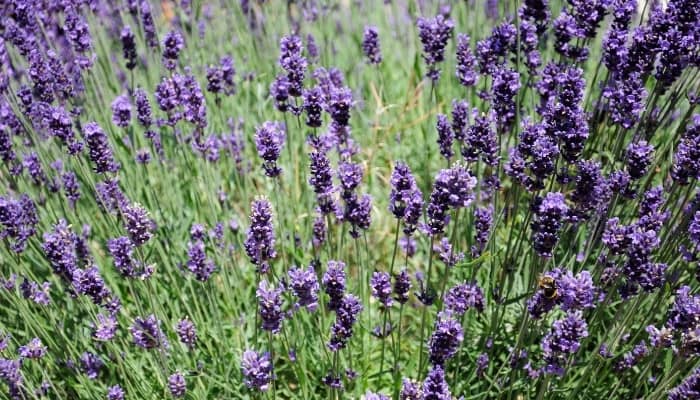
Lavender plants have been used for centuries for their fragrance and essential oils. The scent has a calming effect. When applied topically, lavender can help relax sore muscles.
Lavender leaves and blooms can also be added to food to add a soft floral note. Popular recipes include bread and muffins.
Inside the home, lavender plants add a soft and beautiful décor element. The muted green leaves, purple blooms, and subtle aroma add to a serene environment.
These plants are also known to purify the air around them.
Related Questions:
Which Lavender Is Easiest to Grow?
English lavender is the easier variety of lavender to grow. These plants are low maintenance and fairly tolerant to a variety of conditions.
However, English lavender plants are not recommended for indoor growing because they require a cold dormancy.
Without the dormant period, English lavender will either not produce blooms or will only produce a small number of lackluster blooms.
When Should I Start Lavender Indoors?
If you are starting lavender indoors to transplant outside, it is best to plant the seeds 2-3 months before your transplant date.
Germination can take around 20 days, and then the seedlings will need time to establish their roots.
In cooler locations (Zones 1-6), you should transplant your seedlings in the spring, once the last frost has passed.
In warmer locations (Zones 7-10), you should transplant your seedlings in the fall. This will allow the roots of the lavender to strengthen through the mild winter.
Conclusion
Lavender is not the best plant for indoor growing, but it is still possible to produce fragrant and beautiful blooms inside.
As long as you can meet the light requirements, your lavender plant will reward you with months of relaxation and calm.

